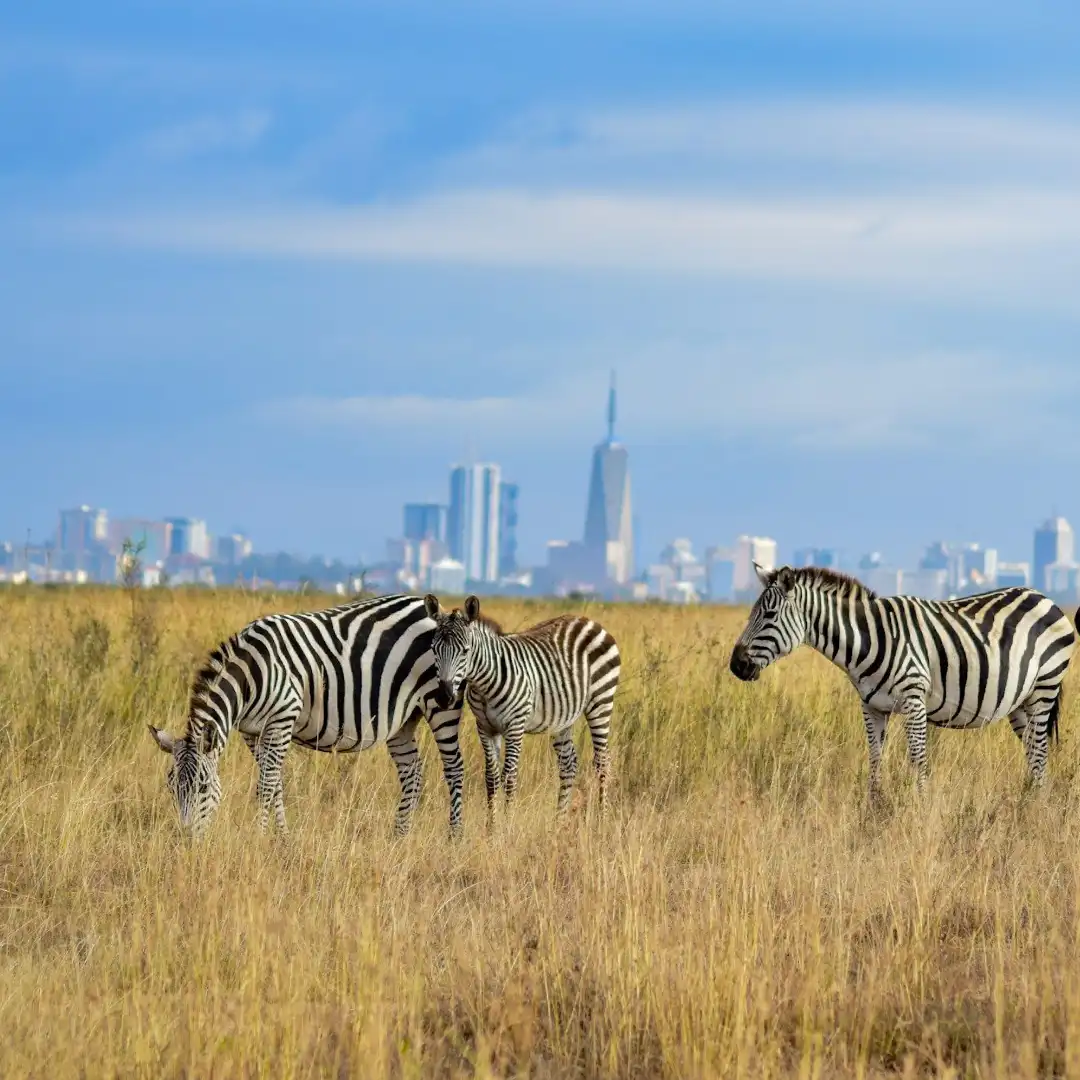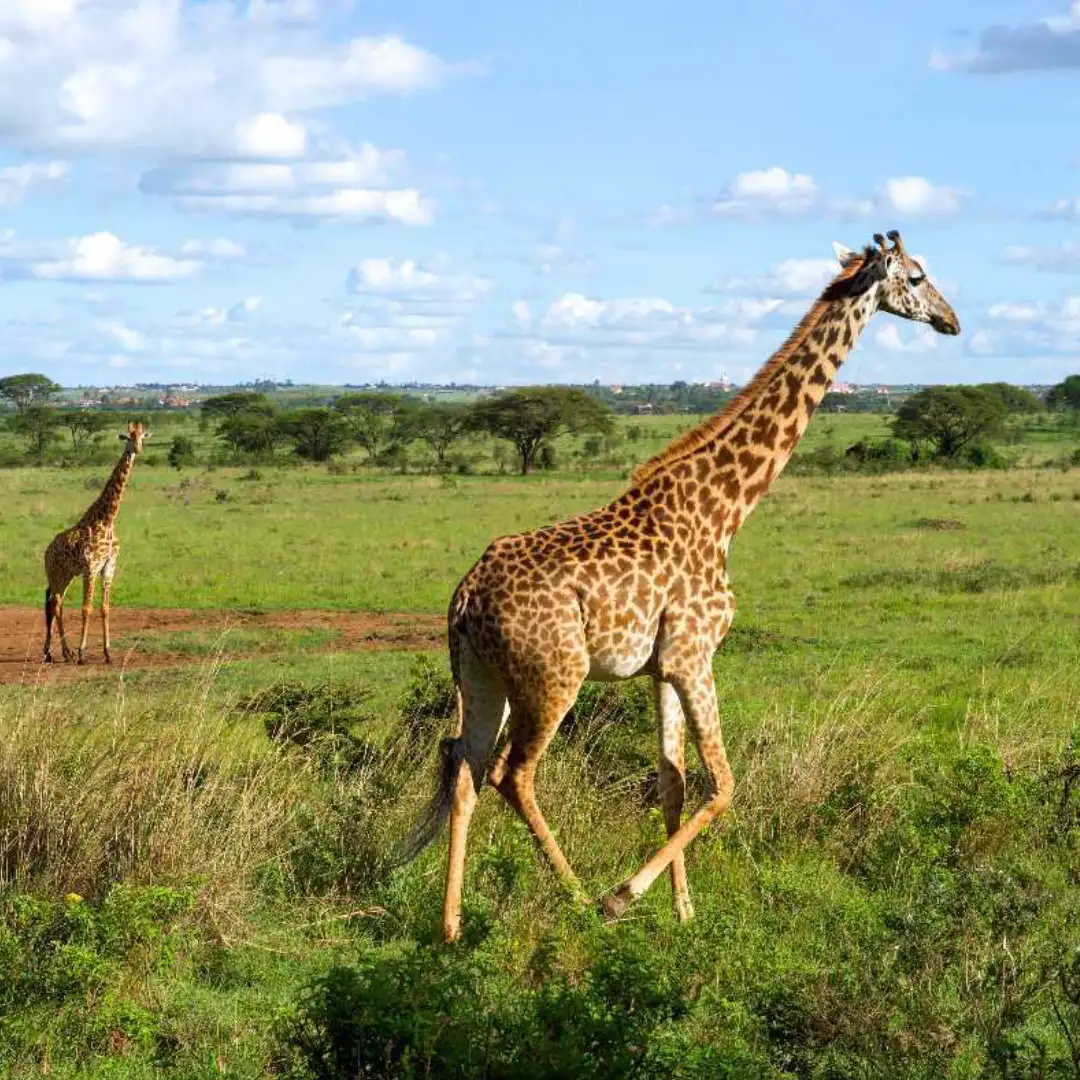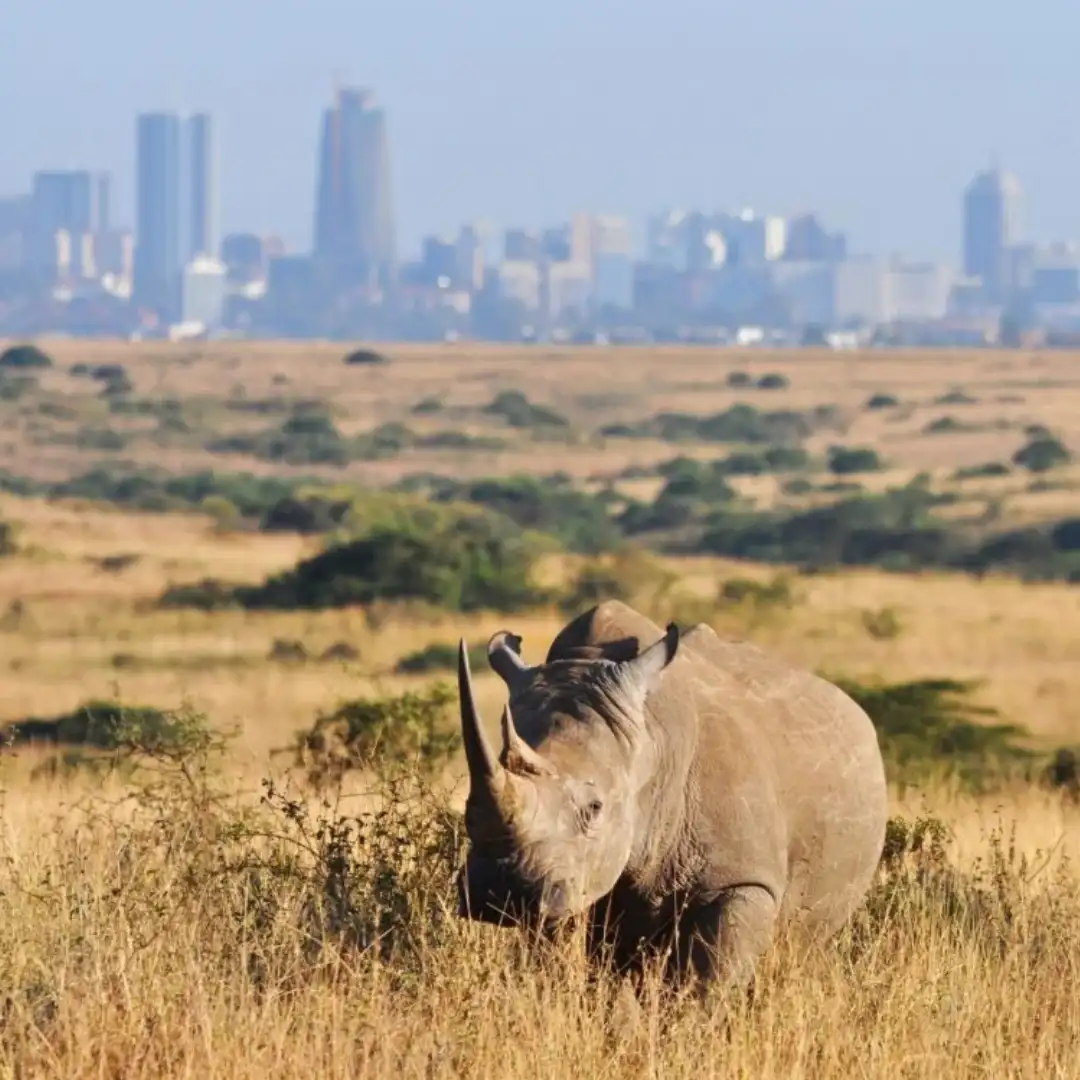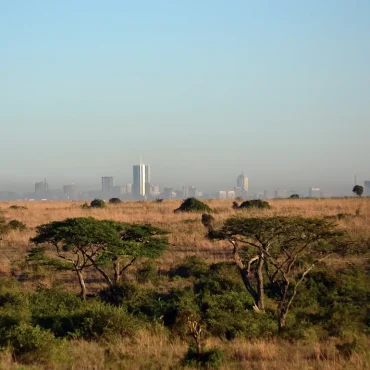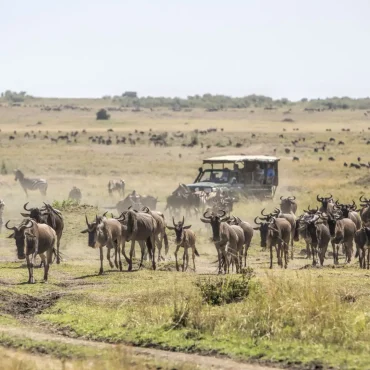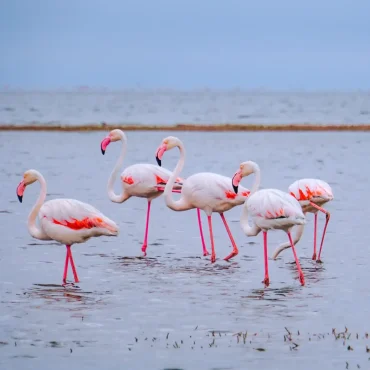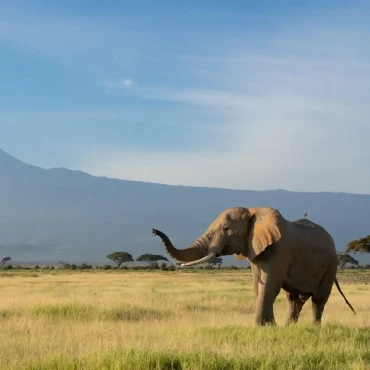Nairobi National Park
Just a stone’s throw from the city’s bustling centre, Nairobi National Park offers a rare wildlife sanctuary. This 117 km² park consists of a diverse ecosystem of open grasslands, acacia bush, highland dry forest, and riverine environments alongside rocky gorges and man-made dams.
This park’s efforts as a rhino sanctuary have made it a model for conservation, successfully nurturing rhinos before relocating them to their native habitats and other sanctuaries. With over 400 bird species and a diverse wildlife population including leopards, lions, cheetahs, and hyenas, it provides an exceptional safari experience close to the urban landscape.
- Spot the majestic black rhino, a conservation success story.
- Wander walking trails by hippo pools amidst a variety of habitats.
- Experience authentic safari nights at Nairobi Tented Camp.
- Visit the Ivory Burning Site Monument, symbolizing anti-poaching efforts.
Just minutes from downtown, Nairobi National Park offers a quick escape to the wild, making it a must-visit for both travellers and residents seeking a unique safari adventure.
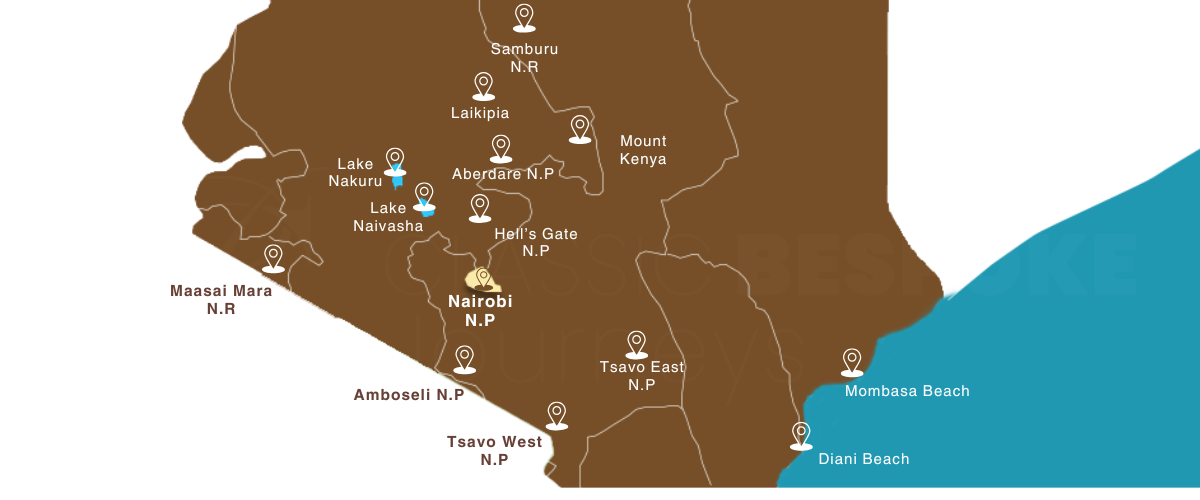
Best Time To Visit
Right in Nairobi City’s backyard, Nairobi National Park is a quick trip to the wild, where city skyline meets savanna
Nairobi National Park is great to visit any time of the year, but the best wildlife watching happens from June to October, known as the Dry season.
During these months, the weather is mostly sunny, the vegetation is sparse, and animals are easier to see as they gather around water sources. This time avoids the muddy conditions of the rainy seasons from March to May and November to December when high grass can also hide animals.
The Wet season, lasting from November to May, transforms the park with lush greenery and plenty of flowers, attracting lots of newborn animals and making it a prime time for birdwatching, especially with migratory birds around.
However, animal spotting becomes more challenging because they spread out and the taller grass obscures them.
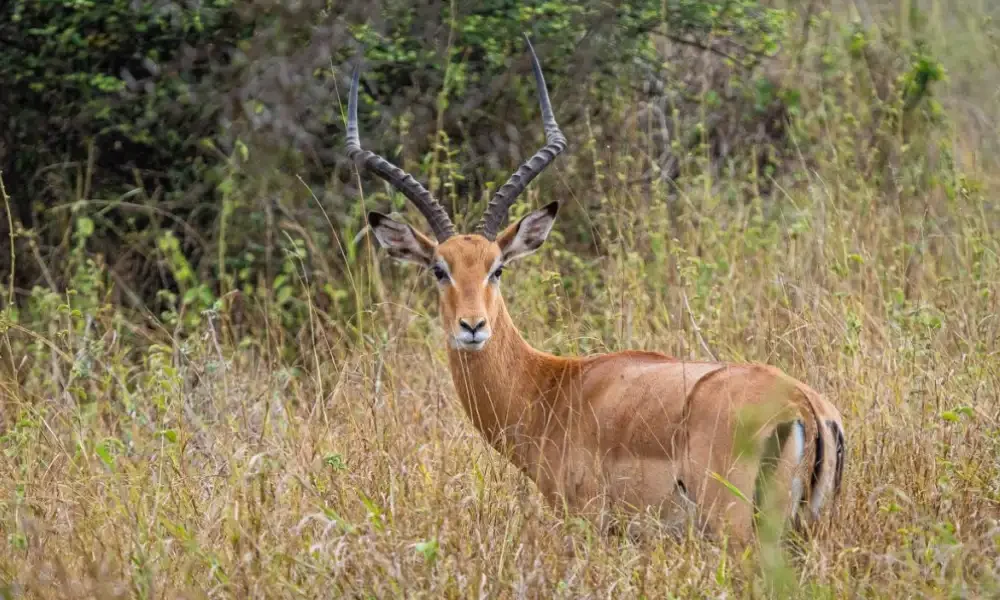
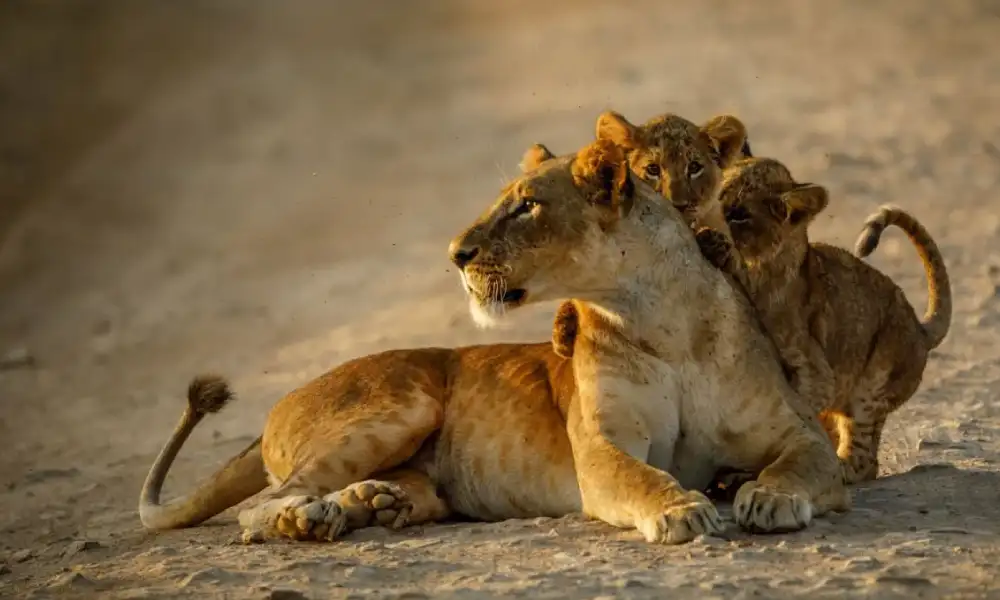
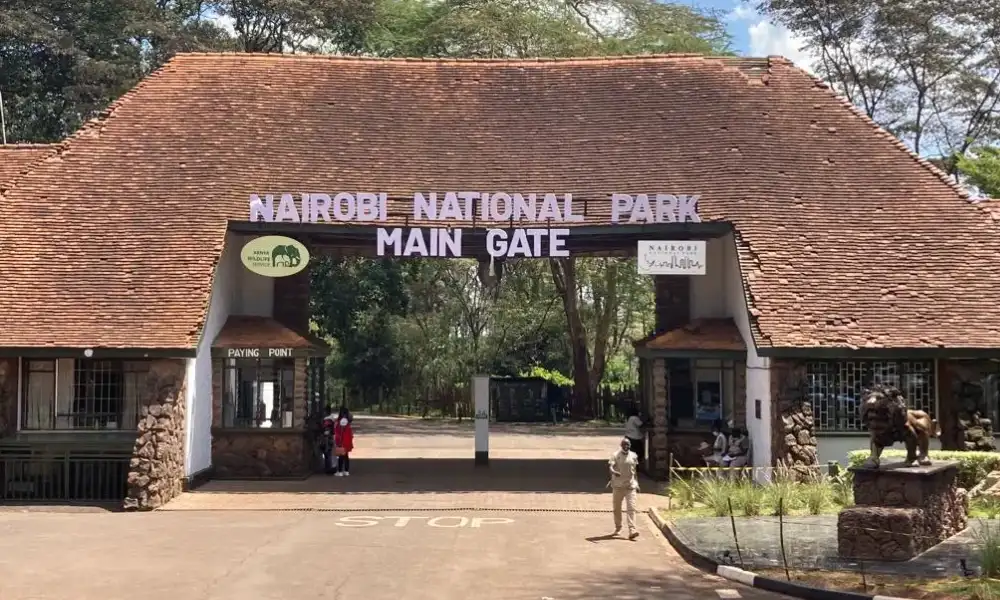
Wildlife
Nairobi National Park presents a splendid snapshot of Kenya’s wildlife on the city’s doorstep. While elephants are absent, the park teems with other iconic African species.
It’s a sanctuary for lions, hosting about 40 of them, and for both black and white rhinos, with the latter often visible grazing in the open. The park excels as a safe haven for these magnificent creatures.
During your visit, you might spot Masai giraffe, zebra, and buffalo. The park is rich in antelope varieties, including sleek impalas, sturdy waterbucks, and elusive elands.
Smaller residents like Oribi and the charming Kirk’s dik-dik add to the diversity, making Nairobi National Park a must-visit for anyone eager to experience Kenya’s wildlife conveniently close to the city.
Nairobi National Park FAQs
Nairobi National Park is unique as it’s the only national park situated within a city’s limits globally. Located just seven kilometres south of Nairobi’s city centre, it’s conveniently accessible via Langata Road.
Spanning about 117 square kilometres (45 square miles), Nairobi National Park may be smaller than other African parks but it hosts a rich diversity of species and habitats.
The ideal times for wildlife viewing are the dry seasons from June to October and December to March. The park is accessible all year, with early mornings offering the best wildlife activity.
Nairobi National Park is a habitat for over 100 mammal species, including lions, leopards, buffalo, and rhinos—four of the ‘Big Five’. It’s also a haven for over 400 bird species and various reptiles.
The park is open daily from 6 a.m. to 6:30 p.m., including holidays, with options for both morning and afternoon game drives.
Why Visit Nairobi National Park?
Wildlife
Home to over 70 species, spot lions, leopards, zebras, and more.
Birdwatching
Explore a bird paradise with more than 400 species, including majestic eagles.
Kifaru Ark
A refuge for rescued rhinoceros, important in conservation efforts.
Black Rhinos
Observe endangered black rhinos in their dedicated sanctuary.
Ivory Monument
Visit the site where 11 tons of ivory were famously burned for conservation.
Hippo Trails
Walk the trails by the Nairobi River for close encounters with hippos and crocodiles.
Explore Kenya Destinations
What Customers Say About Us





